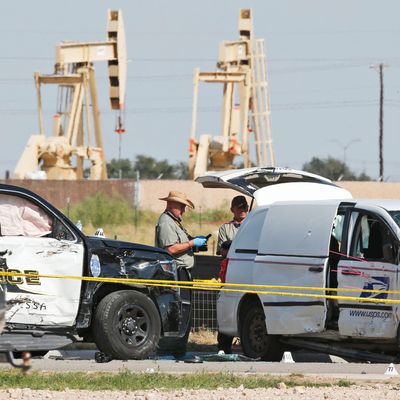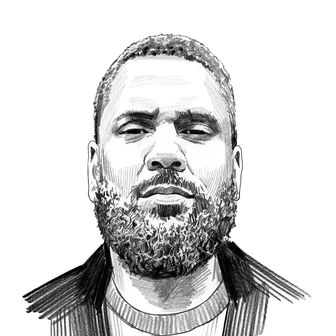
Thirteen people died over Labor Day weekend as a result of mass shootings. Eight were killed on Saturday when a 36-year-old gunman rampaged through Midland and Odessa, in West Texas. On Monday, five members of the same family were killed in Elkmont, Alabama; a 14-year-old boy — who was also a relative — confessed to shooting them all. Both shootings occurred roughly a month after two previous back-to-back massacres: the killing of 22 mostly Hispanic people by a white supremacist at an El Paso Walmart on August 3, and that of nine more the next day in Dayton, Ohio, including the shooter’s sister.
The shootings and their immediate aftermath are linked by three components: Aggrieved young men, easy access to firearms, and thus-far empty promises from President Trump to curtail their recurrence. The first of these factors calls for a societywide overhaul of how boys are conditioned to handle frustration. But the latter two are less intractable: After years of Democratic efforts to do the same, Trump has floated the idea of stronger background checks for gun buyers after El Paso and Dayton, as well as the mass shooting that rocked Parkland, Florida, in 2017. None have happened, however, due in part to pressure from the NRA and other pro-gun factions: “Mental illness and hatred pulls the trigger, not the gun,” the president said in televised remarks last month, mere days after promising “background checks like we’ve never had before.” The same speech saw Trump blame video games for fueling the killers’ imaginations — a tired trope that, ironically, highlights his own imaginative deficiencies.
So it’s fitting that he and his allies are now retreating further into the refuge of the unimaginative: the death penalty, and its false promise as a solution to the very violence it deploys. Following a proposal the president made last month to the same effect, Vice-President Pence’s chief of staff, Marc Short told reporters on Monday that the Justice Department has drafted legislation to expedite capital punishment for people convicted of mass murder. Details are sparse, but Pence is directly involved in discussions about the proposal, which he plans to include in a larger gun-control package for Congress to consider. The death penalty has long been a substitute for logical approaches to crime: It continues to be deployed by officials and reaffirmed by voters from Florida to California, despite there being no evidence that it deters criminal behavior and abundant proof that it is racist in application, prone to ensnaring the innocent and wrongfully convicted at high rates, and executed often using drugs that cause excruciating pain. The U.S. is an outlier in its use — it is the only developed economy besides Japan that still uses it.
It makes even less sense as a strategy to stop mass shootings: According to the Advanced Law Enforcement Rapid Response Training Center at Texas State University — per its website, the FBI-designated national standard in active shooter response training — the majority of mass shootings end in suicide or the attacker getting shot. If mass killers are deterred by the prospect of dying, their behavior doesn’t reflect it. But this would only disquiet proponents of the death penalty if deterrence was their goal. According to the Pew Research Center, majorities of Americans simultaneously believe that capital punishment is morally justified, presents a very real possibility of executing innocents, and does not deter crime. This comfort with error and seeming disinterest in prevention lays bare the method’s cathartic qualities: The death penalty may be inaccurate and won’t change how people behave, but it makes its supporters feel like their sense of justice has been satisfied. This cavalier attitude serves the added function of undermining how seriously its proponents take murder to begin with. If the death penalty is reserved for killers, surely it loses its legitimacy when it both fails to stop them and condemns innocent people to die in the process.
This is even starker under a government that encourages casual violence so gleefully against such a broad range of people, and often for minor transgressions — including its political enemies and the desperate seeking refuge within it borders, as I’ve written about before. But given this context, pushing for laws that ensure mass-shooting perpetrators are put to death faster is also a quintessentially Trumpian approach to the problem: It maximizes the harm done in its wake and in its name, but declines to actually solve it. Barring the unlikely, the president’s efforts to combat gun violence will fall prey to the same motives that have hamstrung previous efforts: The influence of the gun lobby on Republican politics, and the party rank-and-file indifference to widespread suffering where it interferes with their ability to access whatever firearms they want. The result will be one of countless moral atrocities plaguing the criminal-justice system — and the infusion of needless death where preserving life should be the priority.






























